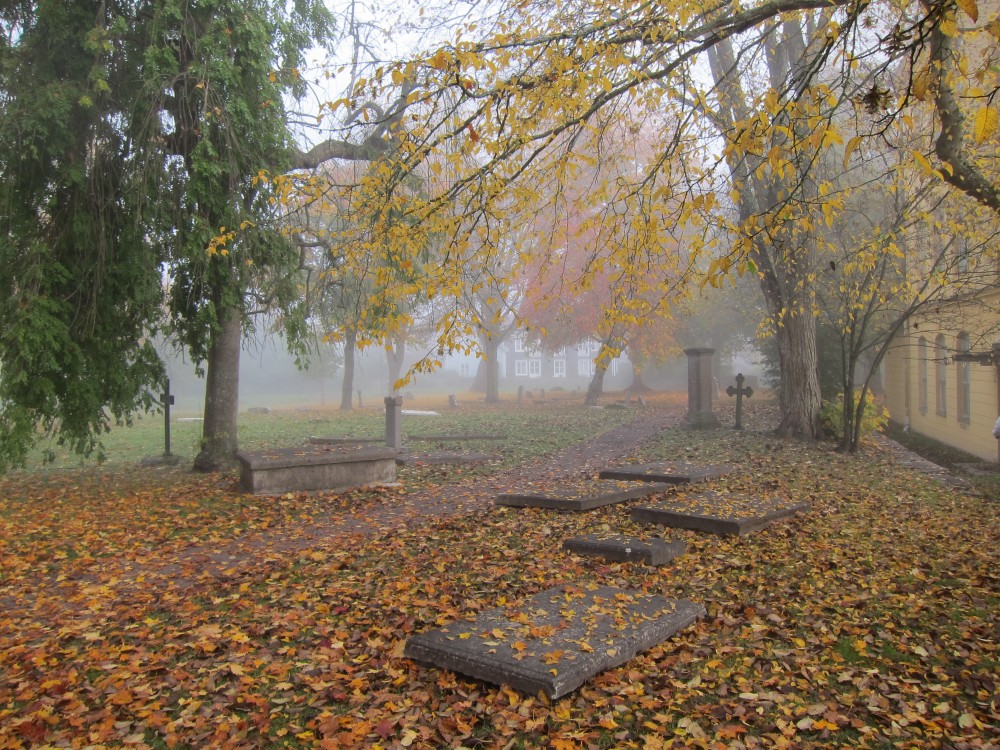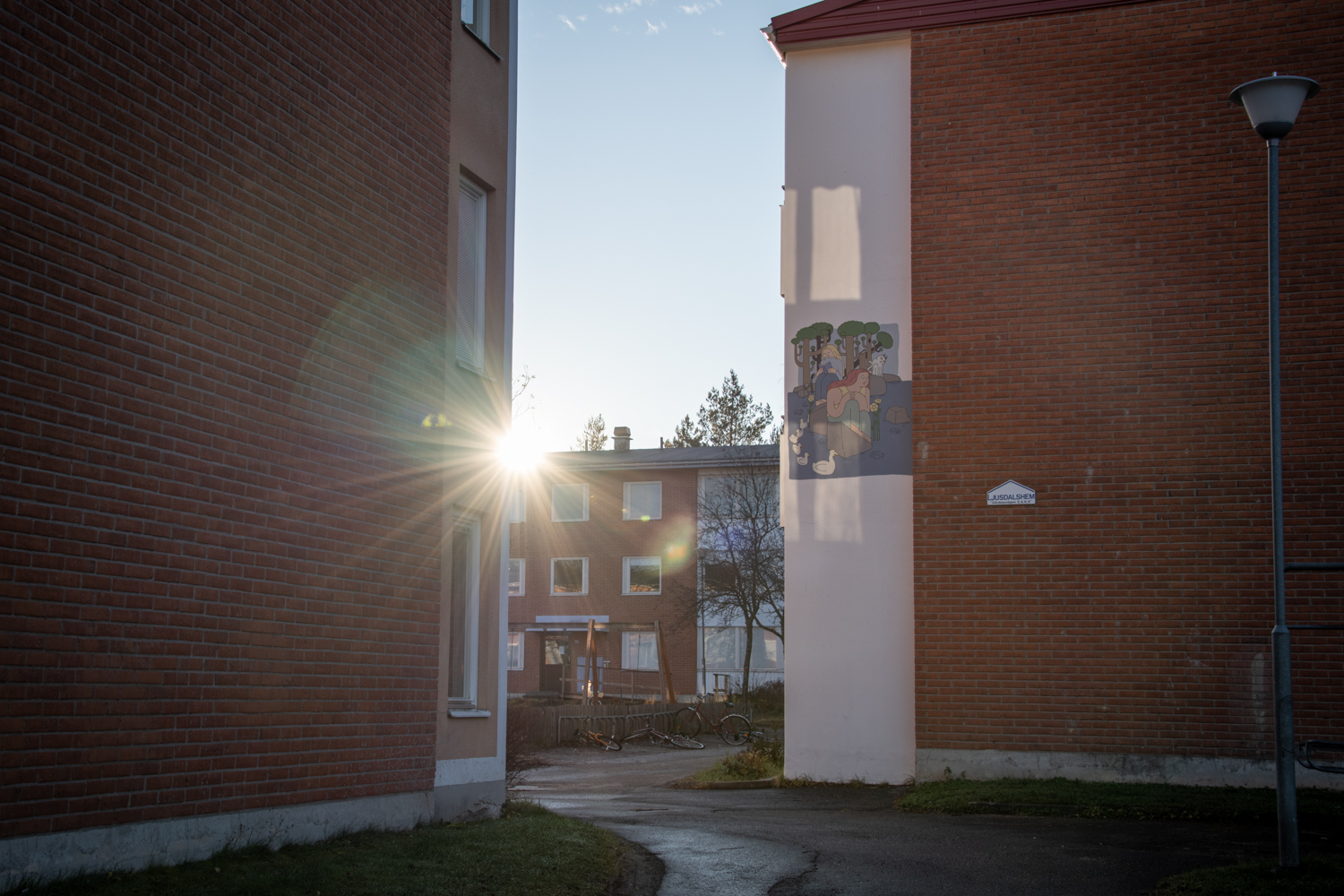Vertical high-reaching poles. A long and elusive horizon. Mythical and tactile footprints. Katarina Pirak Sikku’s three-part work Vájaldibme – Vandring takes us on a hike through the many layers of history.






Om Vájaldibme – Vandring
Memory plays a significant role in Katarina Pirak Sikku’s multifaceted art practice. The collective memory, including that which has been suppressed and distorted throughout history, as well as personal, individual memories. Nature’s way of recording that which has occurred, in annual rings and barely noticeable traces. It is all included in Vájaldibme – Vandring, which also makes visible the indigenous Sámi people on the campus of the Mid Sweden University in Östersund.
Máttarmuora, a forest of sculptural and vertical high-reaching logs, is reminiscent of forests and Sámi crafts; the engraved tree trunks bear personal memories of carving as a natural way to pass the time and fill everyday life with creativity. In addition, the slow-growing pines have their own history, becoming artistic material after the roots were burned up in a forest fire.
The elongated drawing Almerabda provides an authentic representation of the hiker’s impression of a majestic horizon. At the same, there is an enigmatic element in the work, something that defies interpretation, as is also the case with the tin footprints, Mijá luotta, inset in the floor. There are obvious references to Sámi mythology and a literal encounter between feet crossing the corridor floor and the bare soles of the feet.
Curators text by Kristina Möster Nilsson
Katarina Pirak Sikku describes herself as slow but quick nonetheless. This is a good trait for an artist who, in less than six months, has to advance from sketch to completed work. When Pirak Sikku began sketching the artistic intervention for the Östersund campus, she was in Australia on a research trip, hiking and studying patterns designed by the indigenous people – ideas she brought back home. At the foot of the mountains, Östersund is a city where many have hiked, conscripts as well as students. Completed in 2019, the work Vájaldibme – Vandring forms part of the expansion of the Mid Sweden University campus and comprises three parts, Máttarmuora, Mijá luotta and Almerabda.
Connections
Where do you come from? The question is tangible in Pirak Sikku’s life and her art and it informs the selection of materials for Vájaldibme. Consequently, the timber in the large outdoor installation Máttarmuora was collected from areas in Älvdalen ravaged by fire during the drought in the summer of 2018. When, as a result of the fire, the Swedish Fortifications Agency cut the forest down, they donated timber to the artwork. Among the upright logs in Máttarmuora there are seats of recycled stone sourced from the current campus area, previously the Norrland Artillery Regiment A4. Mijá luotta, tin footprints inset in the limestone floor, is located inside the building (K). Mounted with the sole of the feet upwards, each naked sole daily encounters the students’ shoe soles as they make their way to and from lectures. Tin, a traditional Sámi craft material, takes on a new form in this artwork. Each footstep is a tin cast of the artist’s feet. Finally, Almerabda, a long series of drawings was created in Årrenjarka where Pirak Sikku enjoys views of a vast mountain landscape, which reminds her of childhood summers, of the bay where her father grew up and the hike that leads her to the family’s rebuilt lavvu. Vájaldibme springs from all this and also from the, at the time, radical art that her father Lars Pirak passed on to the next generation.
The Hike
As one moves between Máttarmuora, Mijá luotta and Almerabda one notices how the landscape encounters water and fire. Almerabda receives its power from the landscape where the river is free and undammed while the logs in Máttarmuora have been licked by the fire that devoured most of what was in its path. When the river becomes dammed the water takes everything in its way, not unlike the advance of fire. With a starting point in both contemporary events in nature and Pirak Sikku’s relationship to her own heritage, Vájaldibme is an innovative work.
On Katarina Pirak Sikku
Katarina Pirak Sikku was born in 1965 in Jokkmokk, where she lives and works. She is a graduate of Umeå Academy of Fine Arts. A fine boundary between outside and inside, wild nature and architectural space characterises her art. Encompassing manifold materials and themes, Katarina Pirak Sikku’s wide-ranging art practice touches on both activism and aesthetic storytelling. In several projects she has explored artistic formulations related to the history of Swedish race biology. The exhibition Nammaláhpán at Bildmuseet in Umeå (2014), where Pirak Sikku formulated a narrative for the people reduced to numbers in 20th century racial documents, received much attention. During the winter, she primarily devotes herself to landscape painting and drawing. Vájaldibme is Katarina Pirak Sikku’s first permanent public artwork.
Find the artwork
Mittuniversitetet, Campus Östersund, Östersund, Sverige


